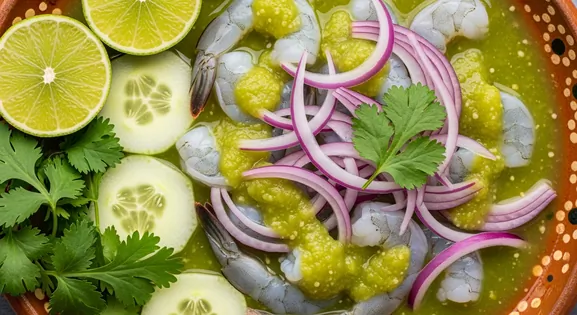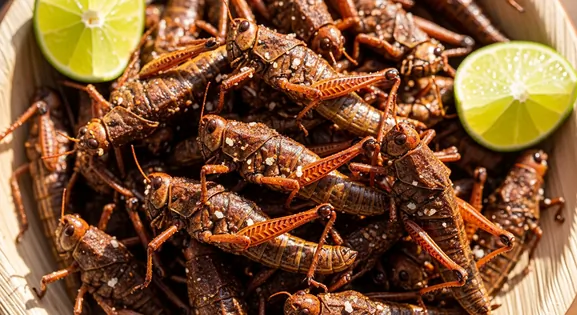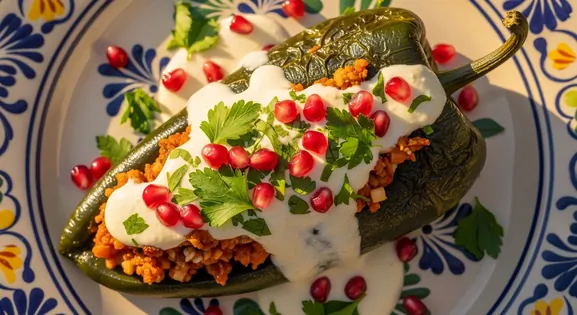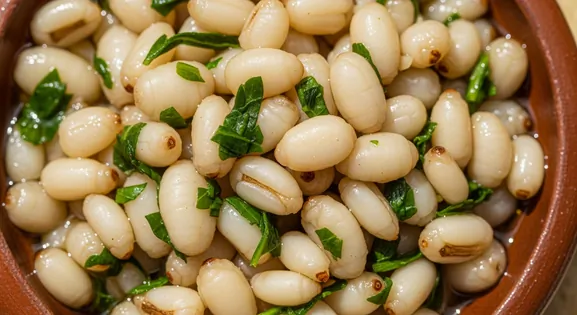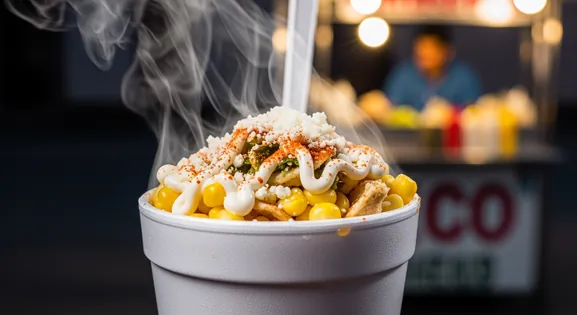Filled Churros in Mexico City
Churros Rellenos
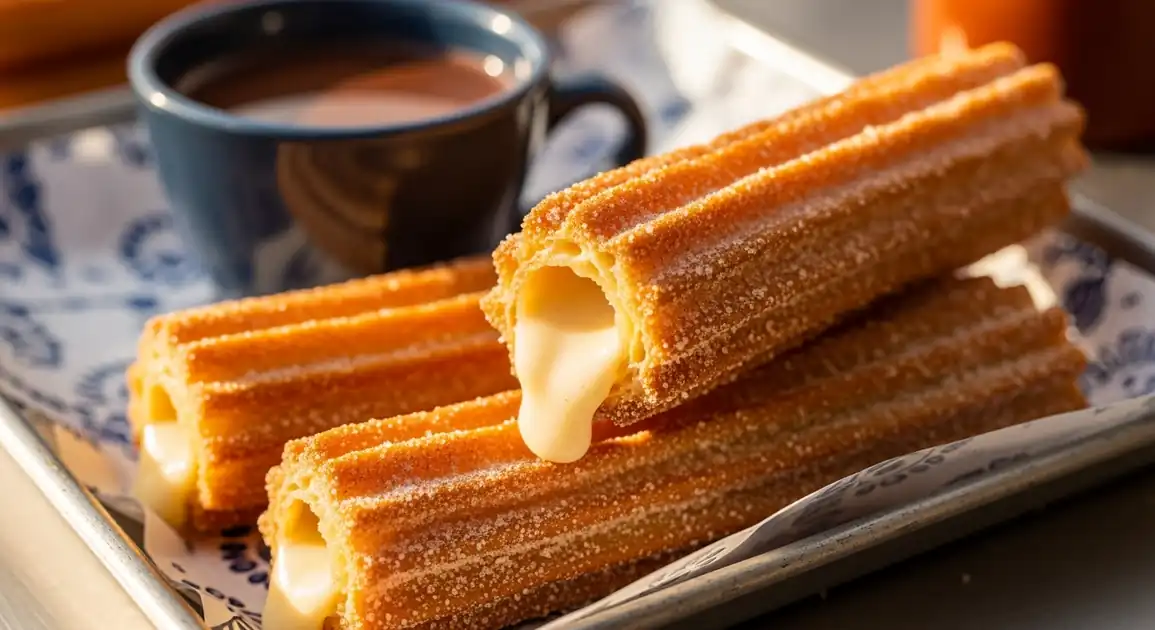
Discovering Authentic Filled Churros
Step into Mexico City's vibrant food scene and discover the irresistible charm of churros rellenos. These crispy, sugar-dusted delights, filled with creamy cajeta or chocolate, are a beloved local indulgence. From bustling street corners to cozy churrerías, finding your perfect filled churro is an essential CDMX experience.
New to Filled Churros? Learn all about its history in our complete guide.
What the Locals Know
For a classic experience, head to any branch of Churrería El Moro. While famous for traditional churros, they also offer excellent filled options, especially their cajeta.
Inside Mercado de Coyoacán, seek out the smaller, independent churro stalls. These often have unique, homemade fillings and a more authentic local feel than larger establishments.
Many locals enjoy their churros rellenos with a cup of traditional Mexican hot chocolate, especially during cooler evenings. It's a perfect complement to the sweet pastry.
Where to Find Filled Churros in Mexico City
Centro Histórico
This bustling historic heart of Mexico City is home to iconic, long-standing churrerías like El Moro, offering both traditional and filled churros amidst grand architecture and lively plazas.
Zócalo, Alameda Central, Bellas Artes, Calle Madero
Afternoon, Evening, Weekends
Roma & Condesa
These fashionable neighborhoods blend traditional churro stands with modern cafes, perfect for enjoying a gourmet filled churro while exploring their leafy streets and vibrant culinary scene.
Parque México, Álvaro Obregón Avenue, Mercado Roma
Afternoon, Evening, Weekend mornings
Coyoacán
Coyoacán's charming cobblestone streets and vibrant markets, including Mercado de Coyoacán, are a treasure trove for authentic churros rellenos, often found at family-run stalls near its famous plazas.
Jardín Centenario, Mercado de Coyoacán, Frida Kahlo Museum vicinity
Afternoon, Weekend mornings, Weekend afternoons
Chapultepec
Around the vast Chapultepec Park, especially near its main entrances and along Paseo de la Reforma, you'll find vendors offering quick, satisfying churros rellenos perfect for a park visit.
Chapultepec Park entrances, Paseo de la Reforma
Weekend mornings, Weekend afternoons
Vendor Tips
- Look for churros with uniform golden color rather than dark spots (indicates proper oil temperature).
- Ask for 'recién hechos' (freshly made) if you don't see them being prepared.
- Some vendors will fill churros with multiple flavors in sections if you ask - great for trying varieties.
- The best vendors allow the oil to fully heat between batches.
An Authenticity Guide
What to Look For
-
Churros fried fresh to order or in very small, frequent batches
Ensures they are hot, crispy, and fully cooked through. Look for active frying.
-
Hot, clean-looking oil (bubbling vigorously)
Proper temperature ensures crispiness and safety; avoid dark, smoking oil.
-
Fillings injected *after* frying, just before serving
Keeps filling fresh and prevents soggy churros.
-
Fillings like custard or cream kept chilled if dairy-based
Dairy fillings are perishable and require refrigeration.
What to avoid
-
Piles of pre-fried churros sitting out, especially if already filled
Lose texture quickly and fillings can become unsafe at room temperature.
-
Very dark, sludgy, or smoking oil
Affects taste and indicates old oil which can be harmful.
-
Fillings sitting out in open containers, especially dairy-based ones in warm weather
High risk for bacterial growth.
The Traveler's Essentials
Dietary Information
Important Note for Travelers: Your safety is our priority. Below are the common allergens associated with the traditional preparation of this dish. However, recipes and ingredients can vary significantly between establishments. Always confirm all ingredients directly with the food vendor before ordering, especially if you have a severe allergy.
Potential Allergens
Dietary Suitability
Price Guide
Budget Tips
- Street vendors away from tourist centers offer the best value (20-35 MXN per filled churro).
- Higher prices (40-70 MXN) in trendy neighborhoods like Roma, Condesa, and Polanco.
- Some specialty cafés serve churros rellenos as desserts at premium prices.
- Ask if there are deals for multiple churros - many vendors offer slight discounts.
- Markets like Mercado de Coyoacán often have traditional vendors with reasonable prices.
Serving & Seasonality
Street vendors typically serve in paper bags or napkins; cafés and dedicated shops may use small plates or decorative paper. Almost always served hot/warm and expected to be eaten immediately.Best Times to Enjoy
- Late Afternoon: Popular after-school or after-work snack (4 PM - 7 PM).
- Evening: Especially popular during evening paseos or after dinner (7 PM - 11 PM).
- Weekend Mornings: Growing in popularity as weekend breakfast treats, especially in parks and plazas.
Seasonal Availability
Available year-round but enjoyed more during the capital's cooler months (November-February) and rainy season (June-September).
How to Order with Confidence
When ordering, don't hesitate to ask for 'recién hechos' (freshly made) to ensure maximum crispiness. Specify your preferred filling, like 'cajeta' (caramel) or 'chocolate'. If you're feeling adventurous, ask if they can combine fillings. Many vendors will fill them on the spot, so watch the process for freshness. Remember, these are best enjoyed immediately, so find a spot nearby to savor your warm treat.
How Locals Eat It: Variations
Gourmet Filled Churros
Upscale versions in trendy neighborhoods like Roma and Polanco featuring premium ingredients like Belgian chocolate, mascarpone cream, or artisanal cajeta.
Churros Rellenos con Helado
A Mexico City specialty combining filled churros with ice cream, creating a hot-cold contrast.
Mini Churros Rellenos
Smaller, bite-sized filled churros popular in some Mexico City cafés and modern vendors.
Savory Filled Churros
An emerging trend in Mexico City featuring savory fillings like cheese, mole, or chorizo, typically found in fusion restaurants and food halls.
Traditions and Etiquette
Local Significance
Mexico City's relationship with churros dates back generations, with famous churrerías like El Moro (est. 1935) becoming cultural institutions. While traditional churros (unfilled with hot chocolate for dipping) remain very popular, the filled version represents Mexico City's innovative food culture.
Eating Customs
- Chilangos (Mexico City residents) typically eat churros while walking or standing, making them perfect street food.
- Locals know to eat filled churros immediately while the contrast between hot, crispy exterior and filling is optimal.
- Many residents have strong loyalty to particular vendors they consider 'the best'.
- In cafés, churros may be enjoyed seated as part of a longer social experience.
Practical Guides for Enjoying Filled Churros
Finding the Best Churros Rellenos in CDMX
Navigate Mexico City's diverse culinary landscape to find the most authentic and delicious churros rellenos, from street carts to dedicated churrerías.
- Look for dedicated 'churrerías' or busy street carts, often found in popular areas like Coyoacán, Roma Norte, or near metro stations.
- Prioritize vendors frying churros fresh ('recién hechos').
- Observe the filling process – ideally done to order with specific injectors.
- Check the cleanliness of the oil and the overall stall.
- Popular fillings in Mexico City include cajeta (caramel), chocolate, lechera (sweetened condensed milk), and sometimes fruit jams.
Spotting Quality Fillings
Learn how to identify fresh, high-quality fillings for your churros rellenos, ensuring a safe and delicious experience in Mexico City.
- Observe if dairy-based fillings (like cream or custard) are kept refrigerated or on ice, especially in warm weather.
- Look for fillings that are injected fresh to order, not pre-filled and sitting out.
- Ask about the origin of specialty fillings like artisanal cajeta or premium chocolate to gauge quality.
- A good filling should have a smooth texture and rich flavor, complementing the churro without being overly sweet.
Enjoying Churros Rellenos Like a Chilango
Embrace the local customs of enjoying churros rellenos in Mexico City, from street-side snacking to café indulgence.
- Eat your churro rellenos immediately while hot and crispy to enjoy the optimal texture contrast.
- Don't be afraid to eat while walking or standing, as this is common for street food.
- Consider pairing your churro with a traditional Mexican hot chocolate, especially from a dedicated churrería.
- Many locals have a favorite vendor; try a few to find yours and join the 'churro loyalty' club.
Our Commitment to Quality
At Tasteplorers, our mission is to provide the most accurate and useful travel information in the world. To achieve this, all content on this site is created through our unique editorial framework. We utilize leading AI research tools, guided by our proprietary prompts, and a multi-stage validation process. This entire system is overseen by our editorial team to ensure everything we publish meets our high standards for accuracy, cultural nuance, and practical value for travelers.
Learn more about our Editorial Process and our Mission.
Explore regions
Europe
Discover Europe's diverse culinary landscape, from Mediterranean flavors to hearty Alpine fare. Learn to navigate markets, decode menus, and eat like a local.
Latin America & Caribbean
Discover the vibrant cuisines of Latin America & the Caribbean. Our expert guide covers everything from Mexican street food to Peruvian ceviche and market tips.
Oceania
Explore Oceania's diverse food scene. Learn about Polynesian earth ovens, Fijian feasts, and the vibrant café culture of Australia and New Zealand.
Southeast Asia
Explore Southeast Asia's diverse food cultures from Thailand to Vietnam. Get expert tips on navigating spice levels, choosing quality vendors, and understanding the rich traditions of the region.
